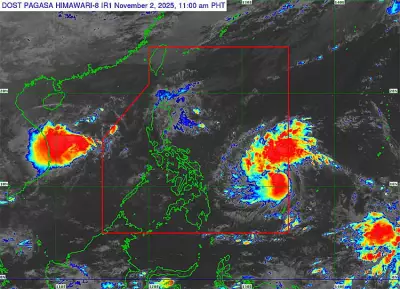
Eastern Visayas is now on high alert as Tropical Storm Tino continues to intensify, prompting government agencies to implement emergency measures across the region. The Philippine Atmospheric, Geophysical and Astronomical Services Administration (PAGASA) has issued severe weather warnings that could significantly impact millions of residents.
Immediate Threats and Warnings
The weather bureau has raised Signal No. 1 in several areas, indicating that damaging winds and heavy rainfall are expected within the next 36 hours. Residents in low-lying and coastal communities have been advised to prepare for potential flooding and landslides.
Key affected areas include:
- Northern Samar
- Eastern Samar
- Samar province
- Biliran
- Southern Leyte
Emergency Preparations Underway
Local government units have activated their disaster risk reduction and management offices, implementing preemptive evacuation measures in vulnerable communities. Emergency response teams are on standby, with relief goods and rescue equipment prepared for immediate deployment.
Critical infrastructure updates:
- Several sea travel routes have been suspended
- Fishing boats and small vessels advised to remain in port
- Schools preparing for possible class suspensions
- Emergency hotlines activated region-wide
Weather Forecast and Projected Impact
PAGASA forecasts that Tropical Storm Tino will bring moderate to heavy rainfall throughout Eastern Visayas, with the possibility of intense downpours in some areas. The storm is expected to enhance the habagat (southwest monsoon), potentially extending the adverse weather conditions to other parts of the country.
Residents are advised to:
- Monitor official weather updates regularly
- Prepare emergency kits with essential supplies
- Secure properties against strong winds
- Avoid unnecessary travel during the storm
- Follow evacuation orders from local authorities
Government Response and Safety Measures
The Office of Civil Defense has coordinated with local disaster agencies to ensure a unified response. Emergency shelters have been prepared and evacuation protocols activated in flood-prone municipalities.
Essential services remain operational with contingency plans in place. Power companies have prepositioned repair crews, while telecommunications providers ensure network stability during the weather disturbance.
The public is encouraged to rely on official information sources and avoid spreading unverified weather reports that may cause unnecessary panic.





